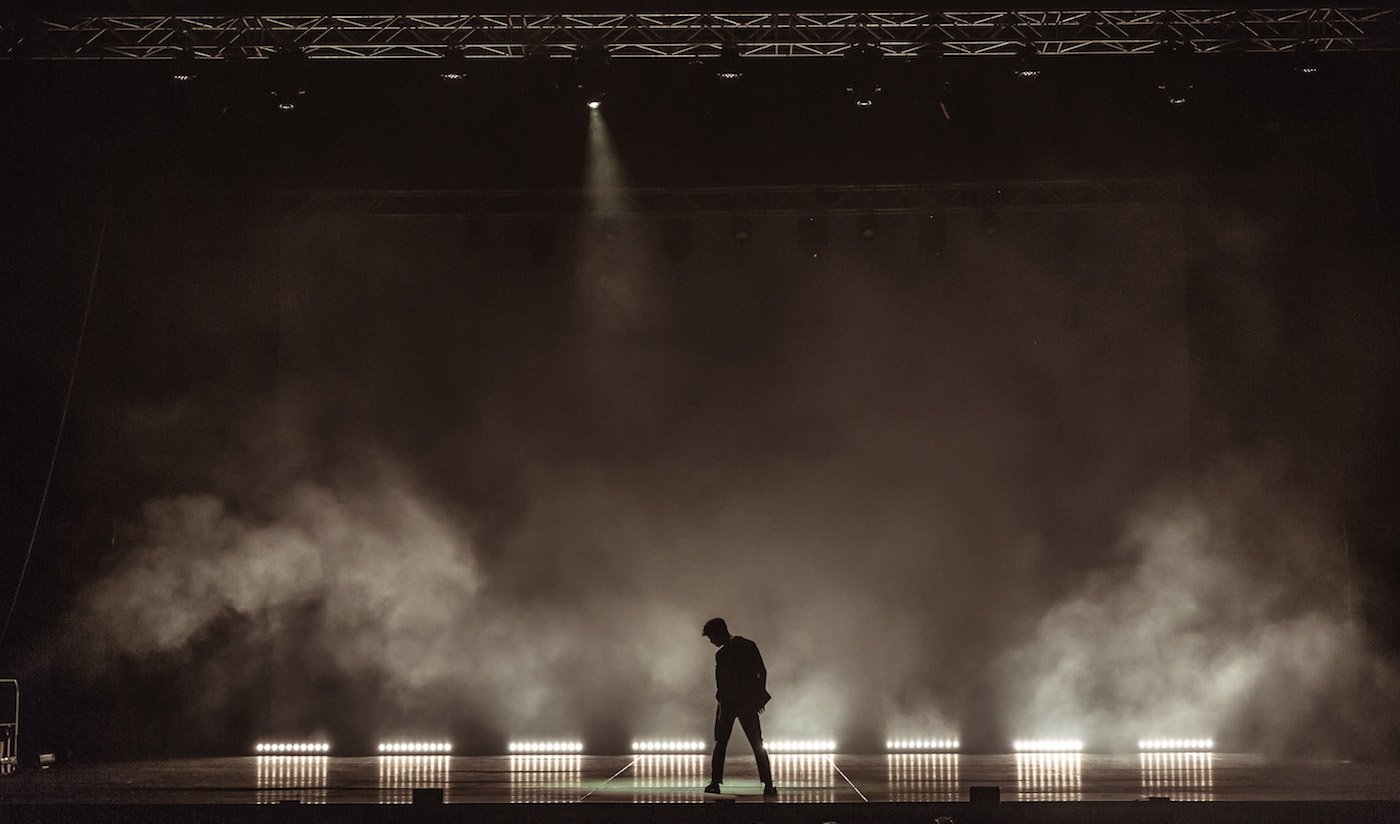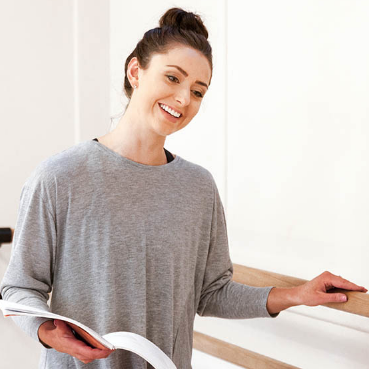Engaging Your Students at Dance Classes
Jarryd Byrne teaching students at Transit Dance
“5, 6, 7, 8”. A common method used to count dancers into the piece choreographed, although you’ll find some students mingling, going over choreography or in their own little world. It’s a topic that is highly contemplated among teachers as it can feel impossible to achieve. We’re talking about engaging your students throughout class. While this proves to be a strenuous task depending on the age group, dynamics, repertoire or teaching methods, one should keep in mind that different strategies are to be used when captivating a 3 year old vs an 18 year old. The key here is targeting your group appropriately.
Play some get to know you games
It starts from the get-go and by that we mean from their initial dance class with you as their teacher. First impressions are everything and no matter the age, you want to be as approachable as possible. You might like to introduce yourself, explaining your dance experience. On the other hand, playing an ice-breaker game where all students get to know one another might be ideal. Perhaps add a dance component to really get everyone thinking. Whichever way you go about it, ensure you also benefit from this exercise by becoming familiar with your students. Learning names might be your first project.
Allegra and and Mackenzie wear the Charlotte Leotard, Premier Tights and Annabelle Ballet Shoe. Allegra wears the Melody Skirt while Mackenzie wears the Emily Skirt in Ballet Pink.
Rotate those warm ups
Sure, warm ups can be fairly simple and achievable, but it might be a good idea to change them up week by week. For example, instead of stretching in the centre, who says a cardio circuit wouldn’t be enjoyable for your under 16’s? It’s a fantastic alternative to not only stimulate the mind, but get nice and warm to avoid injuries and work different body parts. Other alternatives include exercises in a circle or even practising small combinations from the corner that might later be implemented in the routine. All in all, keep things fresh! Instead of reusing the same exercises for the duration of the year, rotate them.
Maya wears the Veronica Camisole in Mint.
Be more selective with your choice of music
One of the most simple yet at times overlooked elements of a dance teacher’s preparation, is the choice of music. Often it’s so easy to place all your time and energy into the choreography, that we forget about the significance of the end of year concert song and or even the class playlist. Music has the potential to make or break a dance routine, hence, before the commencement of the year or season, do some of your own research. Use Spotify or iTunes to have a browse and don’t forget to gain inspiration from dance competitions and/or dance festivals you’ve previously attended. Are you wanting to select mainstream music? Or do you wish to select a song from a musical currently playing in Melbourne or on Broadway? Bare in mind the choreographic style. Just because jazz typically involves the use of upbeat music, doesn’t necessarily mean that’s what you have to select. Let’s also not forget which age group you’re choreographing for. Ask yourself, are your 12 year olds going to want to dance to an 80’s song just because you love it? (Probably not, unless it’s Kate Bush’s ‘Running Up That Hill’). If you’re incredibly stuck, perhaps ask your students which artists they listen to to get the inside scoop.
Emily wears the Alisa Pullover in Lilac, the Cassie Velvet Leotard in White and the Thalia Legging in Lilac.
Make your class interactive
Allowing your classes to be as interactive as possible can prevent them from being repetitive or simply predictable. To encourage future dancers or dance teachers, invite students to consistently take part in class activities and create an inclusive environment. Let students take warm up every so often and teach a corner combination or barre exercise. Selecting a few students to improvise is a great way of letting them control their movement and learn from one another. While prospective teachers may easily pick up your choreography, they should also become accustomed to leading a group. When it comes to crunch time, selecting a costume may be on the back of your mind. To alleviate this stress, involve students by receiving their opinion on which style or colour might suit their dance best. You also want to ensure they feel confident wearing their costume. Prior to their performance, ask what lighting or stage design they think would suit the mood best to evoke emotion on stage. Spotlights are ideal for solos but sidelights could cause dramatic effect for a lyrical piece. Alternatively, you could ask students to correct your demonstration of a straddle jump or split roll, ‘How can I improve my preparation and landing for a straddle jump?’. This not only tests student knowledge, but allows students to identify and correct the mistake through their own demonstration.
‘Untold’ being performed at Australian Dance Festival
Push choreographic boundaries
Choreography. One piece of the puzzle that can have an enormous impact when it comes down to igniting students’ passion to dance. No matter the style, slowly increasing the level of intensity or technique in the routine can alter their capabilities and act as an incentive for continuing dance. You want your students to have as much drive as they did when enrolling in the class, if not more! Typically choreography for ballet classes consist of classical ballet routines. Although, a demi character, lyrical or pointe dance may be a suitable choreographic adjustment, even when it might be an unconventional option. Secondly, if you can see potential in that overly energetic jazz class of yours, would a song and dance or commercial jazz work better? If we get into the nitty gritty, consider choreographing to the beat of the song rather than the lyrics or vice versa. By doing so, your routine will include rhythmic variations. Once again, it goes without saying that you should cater to the age group participating in the class. There might be a trending TikTok with a well known dance movement or an iconic song remix that would work perfectly for your under 13’s. Options are truly endless!
Make storytelling key
Let’s not forget the purpose behind the choreography itself. It could be to inspire or even educate. One aspect that you may want to speak to your class about is storytelling. Through your choreography, choice of music, costuming and makeup, what narrative is being told? This aspect can be one of the hardest to pinpoint although we encourage you to share your concept with the class prior to or throughout the choreographic process. If the song and style is emotional, maybe each student could draw from their own experiences and display their personal story throughout the piece. Or perhaps all students could embody and be dressed as characters from a popular film or game. Play around with these ideas and see if you can grasp their thoughts and develop your concept further.
Martha wears a Teagan Crop Top and Astrid High Cut Brief in Red.
Use props and accessories every now and then
Props and accessories are one of the simplest ways of gaining students’ attention, youngsters in particular. Grab teddy bears, bean bags, hula hoops, bags or a Ribbon Stick in the hope that students are willing to participate in class with their fellow dance friends. If you find these become too much of a distraction, maybe it’s best to stick with one prop rather than several. For your mature dancers, using exercise balls or Therabands could help strengthen and stretch different muscle groups throughout warm up or before class finishes, so it’s worth a try!
Ruby wears the Emery Leotard with Skirt in Candy alongside the Casey Duffle.
Be that ray of sunshine
Children and adults feed off of your energy, and while we all have our days, it’s important to instil motivation in dancers. For instance, if you’re teaching a competition class with students who have never had the opportunity to dance with one another before, they are most likely going to require some extra rehearsals and bonding exercises so they become familiar with each other and share a level of trust. Due to this factor, if you show a lack of hope in placing at competitions or are constantly critiquing and leaving no room for praise, students may feel down or unenthused.
There are all sorts of strategies one can use to engage dance students throughout class and part of the process is your willingness to alter how you teach classes depending on the students. Some final points to consider; placing yourself in their shoes by thinking of what they would deem interesting or exciting is only going to improve the relationship that you have with your students. In addition to this, there’s no harm in watching on at your colleagues’ dance lessons or attending adult classes if you wish to feel inspired. Being as proactive as possible will benefit you in this scenario. Believe you’ve got what it takes! All you need is a little drive.
Article by Lara Divitcos
Photography by Elly Ford, featuring teacher Jarryd Byrne and students from Transit Dance













